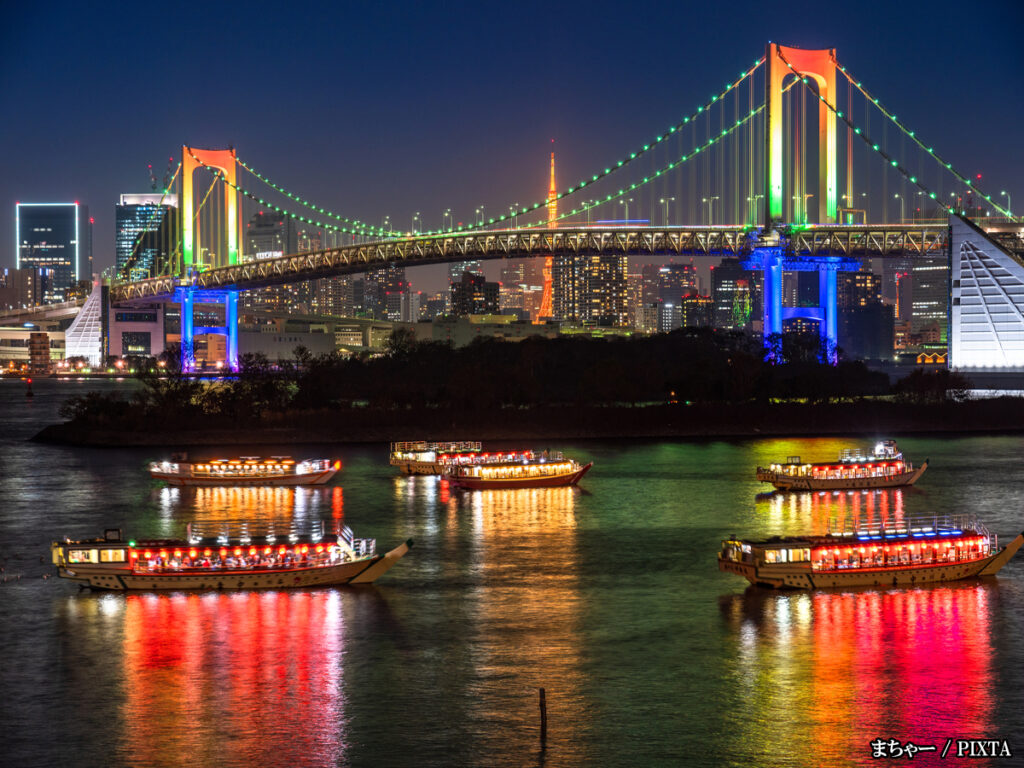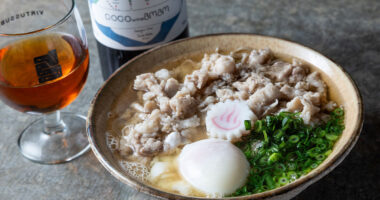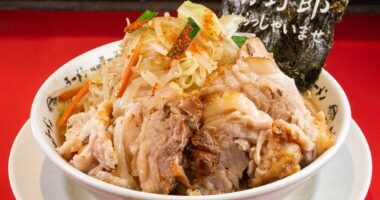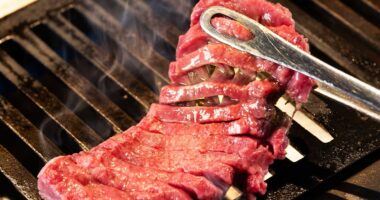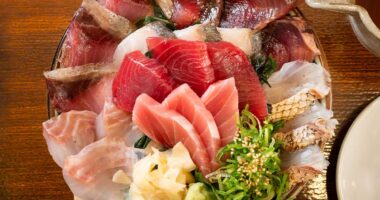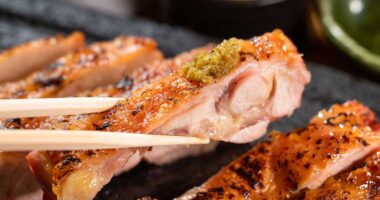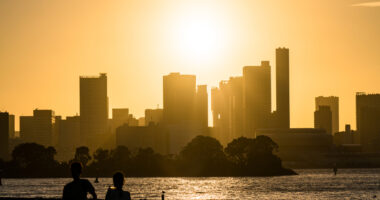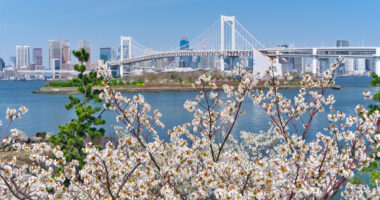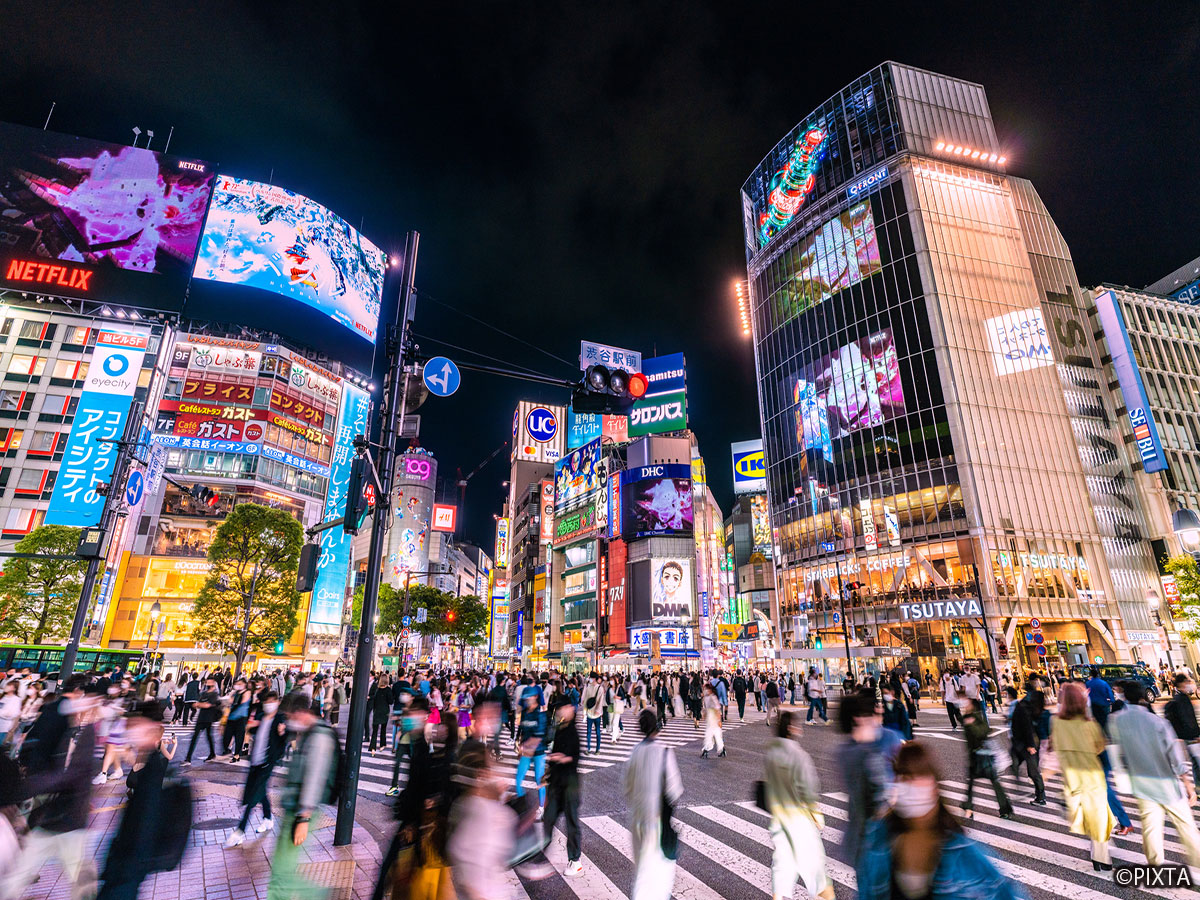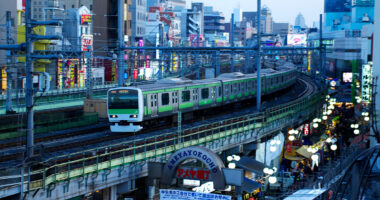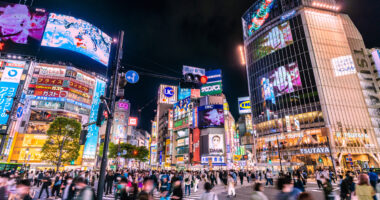Tokyo is a photographer’s dream, where every corner tells a story through dazzling lights, towering skyscrapers, and streets pulsing with life. But when it comes to the most photogenic spot in this vibrant city, two locations stand out— Shibuya and Odaiba.
Odaiba, a futuristic island in Tokyo Bay, blends cutting-edge architecture with waterfront serenity. From the illuminated Rainbow Bridge to a towering life-sized Gundam, its skyline offers a stunning contrast of technology and nature.
Meanwhile, Shibuya is the electrifying heart of Tokyo’s urban energy. The iconic Shibuya Scramble Crossing transforms into a living river of people, while neon-lit streets and panoramic city views create the perfect backdrop for dynamic street photography.
Both are a paradise for photographers— In this guide, we’ll explore the best photo spots in Odaiba and Shibuya to help you decide which destination deserves the spotlight in your travel album.
Shibuya: a photogenic must-visit place
Shibuya is Tokyo’s beating heart—an energetic hub of youth culture, trendsetting fashion, and dazzling neon lights. This district embodies the modern metropolis aesthetic, making it a dream for photographers who love to capture movement, energy, and the vibrant essence of Tokyo. Whether you’re drawn to towering skyscrapers, bustling streets, or artistic backstreets, Shibuya offers limitless opportunities for the perfect shot.
Best photography spots in Shibuya
Shibuya Scramble Crossing
- Location: 2-2-1 Dōgenzaka, Shibuya-ku, Tokyo, Japan
- Why it’s photogenic: This location is perfect for action shots, time-lapse photography, and neon-lit night captures.
- Best time to visit: Evening or sunset for the best lighting and dynamic city vibes
- Nearest station: Shibuya Station (Hachiko Exit)
Nothing says “Tokyo” quite like the Shibuya Scramble Crossing. This world-famous intersection is an orchestrated chaos of people rushing in every direction, all under the glow of massive LED billboards and advertisements. Photographers love to capture the movement here, whether it’s from street level or an from elevated view at places like Shibuya Sky, Mag’s Park, or other locations nearby.
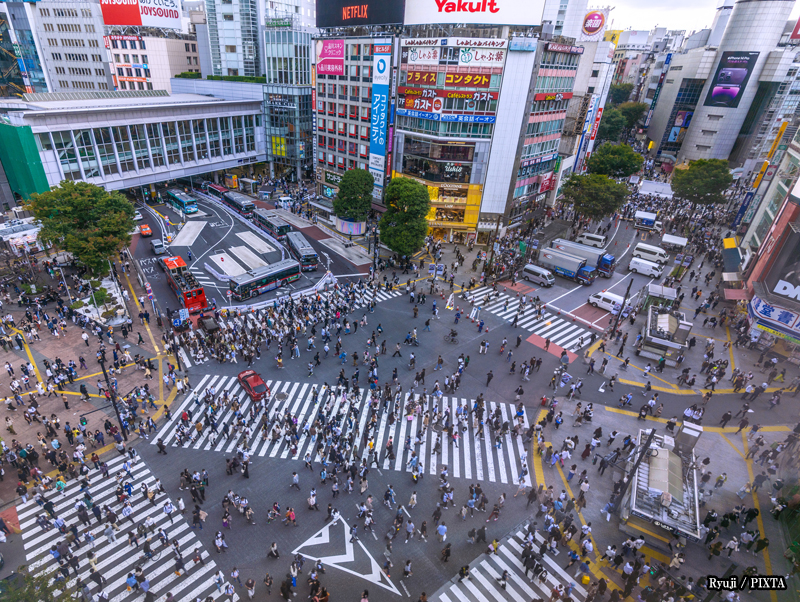
Photo for illustrative purposes
Hachiko Statue
- Location: 1-2-1 Dōgenzaka, Shibuya-ku, Tokyo
- Why it’s photogenic: Capturing the statue with the buzz of Shibuya Station in the background makes for a timeless shot.
- Best time to visit: Anytime, though less crowded in the morning
- Nearest station: Shibuya Station (Hachiko Exit)
A short walk from the crossing is the Hachiko Statue, a touching tribute to Tokyo’s most famous dog. Hachiko waited at Shibuya Station daily for his owner, even years after his passing. The statue is a popular meeting spot and a symbol of loyalty and devotion.
Shibuya Sky
- Location: 2-24-12 Shibuya, Shibuya-ku, Tokyo
- Why it’s photogenic: Provides a bird’s-eye view of Shibuya Scramble Crossing, capturing the scale and vibrancy of the city from above.
- Best time to visit: Sunset for golden-hour photography
- Ticket price:
Teens and adults (13 years and older):
Admission before 3:00 PM: in advance 2,700 JPY, same-day 3,000 JPY
Admission after 3:00 PM: in advance 3,400 JPY, same-day 3,700 JPY
Children (elementary school students, up to age 12): 1,200 JPY (same-day purchase only)
Preschoolers (6 years and under): Free
(All prices include tax) - Website: Shibuya Sky official website
For panoramic city views, Shibuya Sky is unbeatable. The observation deck, located on the 47th floor of Shibuya Scramble Square, provides a sweeping view of Tokyo’s skyline, including Tokyo Tower and even Mount Fuji on clear days.
Shibuya Center-Gai
- Location: Udagawachō, Shibuya-ku, Tokyo
- Best time to visit: Evening for vibrant neon lights
The heart of Shibuya’s street culture, Center-Gai is lined with trendy shops, entertainment centers, and izakayas. It’s a fantastic location for capturing Tokyo’s urban nightlife, youth culture, and the latest fashion trends.
Meiji Jingu Shrine
- Location: 1-1 Yoyogikamizonocho, Shibuya-ku, Tokyo
- Best time to visit: Morning for peaceful photography
- Website: Meiji Jingu Shrine official website
A short walk from Shibuya’s urban chaos, Meiji Jingu Shrine is a serene oasis within a lush forest. It’s a beautiful contrast to the city’s fast pace and a perfect spot for those looking to capture traditional Japanese aesthetics.

Photo for illustrative purposes
How to get to Shibuya
Shibuya is one of Tokyo’s most accessible districts, with multiple train and subway lines stopping at Shibuya Station.
- JR Lines: Yamanote Line, Saikyo Line, Shonan-Shinjuku Line
- Tokyo Metro: Ginza Line, Hanzomon Line, Fukutoshin Line
- Tokyu Lines: Den-en-toshi Line, Toyoko Line
- Keio Inokashira Line
- Website: JR East station information
Odaiba: a photographer’s dream location
Odaiba is a futuristic artificial island located in Tokyo Bay, offering a perfect blend of modern entertainment, innovative architecture, and stunning waterfront views. Originally developed in the 1850s as a set of defensive islands to protect Tokyo from naval threats, Odaiba has evolved into one of the city’s most vibrant leisure and shopping districts. The area is known for its open spaces, spectacular skyline views, and cutting-edge attractions, making it a must-visit for tourists and photographers alike.
Odaiba is uniquely distinct from other parts of Tokyo due to its wide walkways, waterfront promenades, and spacious urban planning—a stark contrast to the dense, fast-paced environments of areas like Shibuya and Shinjuku. Whether you want to take a peaceful stroll along Odaiba Marine Park, capture the illuminated Rainbow Bridge at night, or explore futuristic landmarks like the life-sized Unicorn Gundam statue, this district has something for everyone.
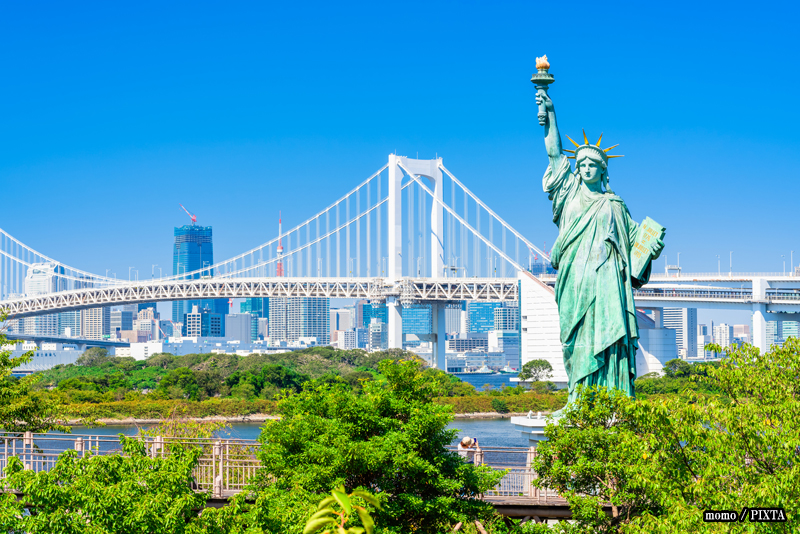
Photo for illustrative purposes
Why Odaiba is a photographic gem
Odaiba is one of the most visually striking areas in Tokyo, offering breathtaking photo opportunities that blend urban landscapes, waterfront reflections, and iconic structures. Unlike central Tokyo, which is dominated by skyscrapers and busy streets, Odaiba features expansive open spaces that allow photographers to experiment with different angles, perspectives, and compositions.
Best photography spots in Odaiba
Rainbow Bridge
- Best time to photograph: Sunset and night
- The Rainbow Bridge connects Odaiba to central Tokyo and is illuminated in a spectrum of colors at night, creating a magical backdrop for cityscape photography.
- For the best long-exposure shots, visit Odaiba Seaside Park or Daiba Park, both of which offer unobstructed views of the bridge.
Life-sized Unicorn Gundam statue at DiverCity Tokyo Plaza (as of April 2025)
- Best time to photograph: Day and early evening (before the light show)
- This towering 19.7-meter (64.6 ft) Gundam statue undergoes transformation sequences throughout the day, shifting from Unicorn Mode to Destroy Mode.
- The best perspective for a dramatic shot is from the lower ground, looking upwards to emphasize the statue’s scale.
- Best time to visit: Evening (for the full transformation show and light effects).
- Address: 1-1-10 Aomi, Kōtō-ku, Tokyo
- Website: Gundam Base Tokyo official website
Fuji TV Building
- Best time to photograph: Daytime
- The Fuji TV headquarters is one of Odaiba’s most iconic futuristic structures, with a distinctive spherical observatory on the top floors.
- For the best photos, capture the building from Aqua City Odaiba, where you can frame it with the Rainbow Bridge in the background.
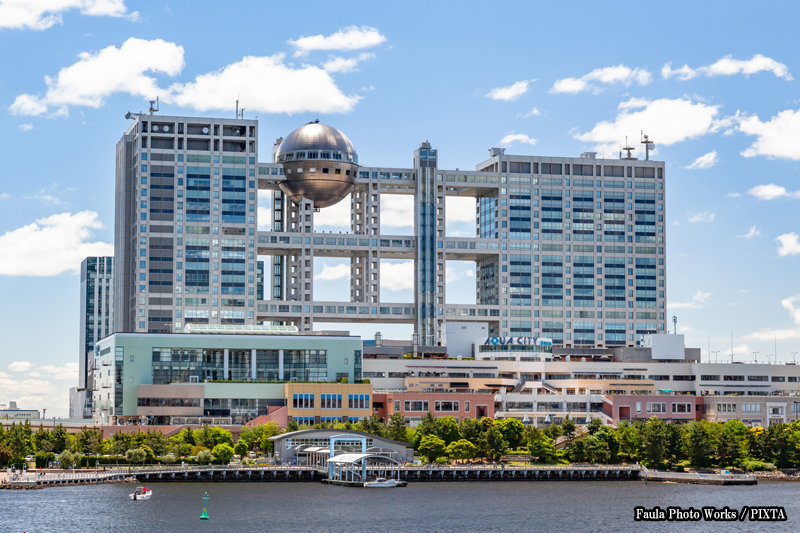
Photo for illustrative purposes
Odaiba Seaside Park
- Best time to photograph: Sunset
- This artificial beach area provides some of the most serene waterfront views in Tokyo, making it perfect for reflection photography.
- From here, you can capture the Statue of Liberty replica, which offers a unique blend of Japanese and Western influences.
- Best time to visit: Sunset and night (for dramatic light contrasts).
- Address: 1-4 Daiba, Minato-ku, Tokyo
- Website: Tokyo Odaiba Guide
DiverCity Tokyo Plaza and Immersive Fort Tokyo
- Best time to photograph: Evening
- DiverCity Tokyo Plaza’s neon lights and entertainment zone create a lively urban aesthetic, while Immersive Fort Tokyo—formerly VenusFort—offers an all-new, high-tech immersive environment with interactive installations and projection mapping, providing a completely different photographic mood.
(VenusFort closed in 2022 and was reborn as Immersive Fort Tokyo in 2024. Check the latest details before you visit, as exhibits and operating hours may continue to evolve.)
How to get to Odaiba
Unlike areas such as Shibuya and Shinjuku, which are well-served by the JR Yamanote Line, Odaiba requires a different approach to reach. However, it remains highly accessible via various transportation options, including an automated monorail, a private railway, and even scenic water buses.
Yurikamome Line (Driverless Monorail)
- Route:
Shimbashi Station (Yamanote Line, Ginza Line, Asakusa Line) → Daiba Station (or other Odaiba stops) - Description:
The Yurikamome Line is a driverless, fully automated monorail that provides spectacular views as it crosses the Rainbow Bridge. It is one of the most scenic ways to enter Odaiba, especially during sunset or nighttime when Tokyo Bay is illuminated. - Key Odaiba Stations:
Daiba Station: Close to Aqua City Odaiba, Fuji TV Building, and Hilton Tokyo Odaiba.
Odaiba-Kaihinkoen Station: Near Odaiba Seaside Park and Rainbow Bridge.
Aomi Station: Best for the life-sized Unicorn Gundam statue. - Fare: 330 JPY (tax included) from Shimbashi Station to Daiba Station
- Website: Yurikamome official website
Rinkai Line
- Route:
Shinjuku Station → Tokyo Teleport Station (direct train) - Description:
The Rinkai Line directly connects Shinjuku and Shibuya to Odaiba without requiring transfers. However, depending on the time of day, alternative routes with transfers may be necessary. This is ideal for travelers coming from western Tokyo. - Key Odaiba Station:
Tokyo Teleport Station: Closest to DiverCity, Immersive Fort, and the Unicorn Gundam statue. - Fare: 520 JPY (tax included) from Shinjuku to Tokyo Teleport Station
- Website: Tokyo Rinkai Line official website
Water bus (Tokyo Bay Ferry)
- Route:
Asakusa → Odaiba Seaside Park - Description:
The Tokyo Water Bus offers a relaxing cruise along the Sumida River, passing iconic landmarks such as Tokyo Skytree before arriving at Odaiba. - Key Odaiba Terminal:
Odaiba Seaside Park Pier - Fare: 2,000 JPY (tax included) from Asakusa to Odaiba
- Website: Tokyo Water Bus official website
- Address:
1-4-1 Daiba, Minato-ku, Tokyo
Other transportation options
- Taxi: 3,000 to 5,000 JPY from central Tokyo.
- Car: Accessible via Rainbow Bridge; parking available at DiverCity, Aqua City, and Immersive Fort
- Walking: Pedestrians can cross Rainbow Bridge Promenade for free (open hours vary).
Final verdict: Which is the most photogenic tourist spot?
Both Odaiba and Shibuya provide incredible photography experiences, each with its own distinct charm. Whether you’re captivated by the fast-paced energy of Shibuya Scramble Crossing or the tranquil waterfront beauty of Odaiba’s Rainbow Bridge, each location offers unforgettable shots that showcase Tokyo’s diverse landscapes.
For more expert photography tips, location guides, and hidden gems, let Umami bites be your guide to capturing the perfect shot in Tokyo. Whether you’re shooting neon-lit streets in Shibuya or framing the stunning skyline of Odaiba, we’ll help you find the best angles and moments to make your photography trip truly spectacular.
